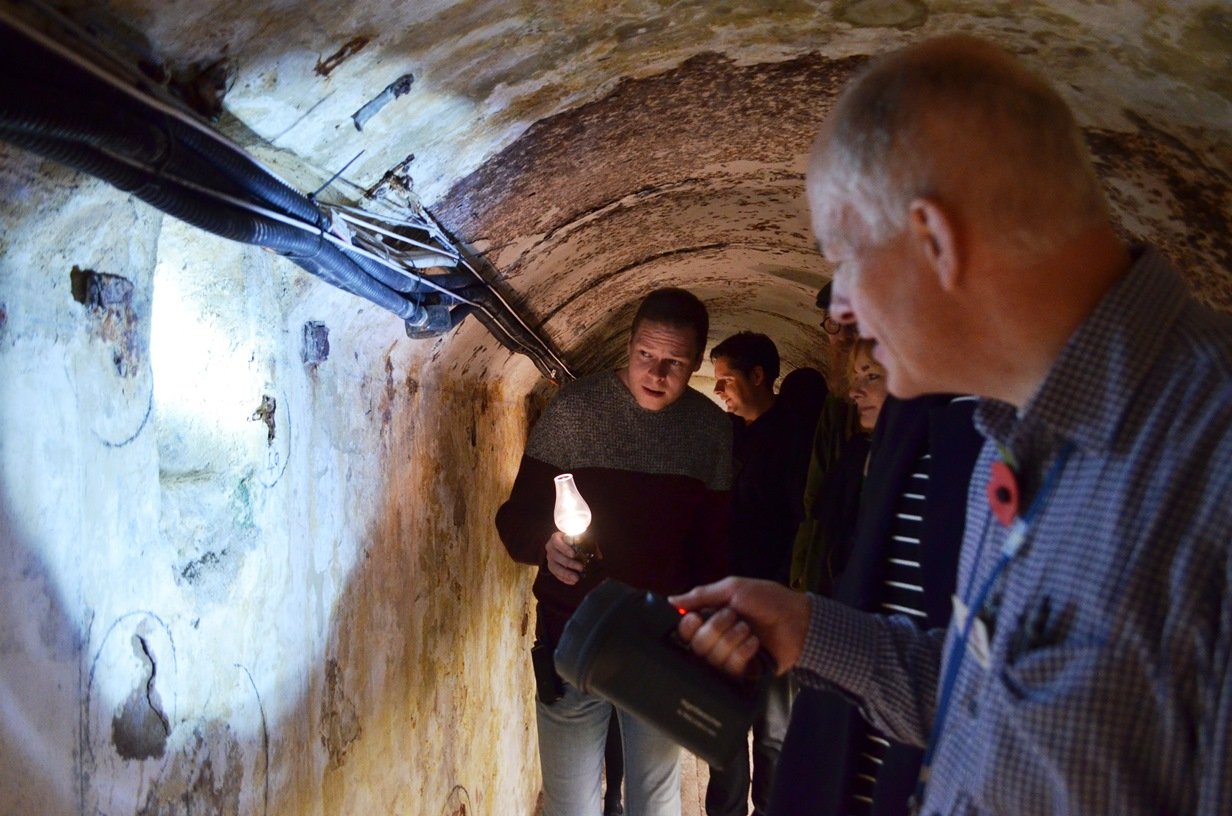
A Royal Pavilion tunnel tour
Photo: Royal Pavilion & Museums Brighton & Hove
Developing a workforce
A third of frontline staff in Brighton’s museums have now taken part in a placement programme that is boosting their skills. Helen Graham explains how it works.
Around four years ago the Director of Royal Pavilion & Museums Brighton & Hove (RPM) Janita Bagshawe envisaged a workforce development scheme for frontline staff. The idea was to give permanent and casual frontline colleagues across RPM’s five venues (the Royal Pavilion, Brighton Museum & Art Gallery, Hove Museum, the Booth Museum of Natural History and Preston Manor) new opportunities to develop both personally and professionally, and potentially to move into new roles.
Staff members are offered opportunities outside their day-to-day work in around 15 areas, including programming, collections, events, bookings, engagement and conservation
I worked with Janita to realise this vision as part of an Arts Council England Major Partner Museum that includes a leadership role in equality and diversity. We set up our own workforce development programme (WDP) to develop skills among staff, support their career progression, contribute to their personal development, bring new and fresh perspectives to our work and build a ʻone teamʼ ethos within the organisation.
Flexible placements
Staff members are offered opportunities outside their day-to-day work in around 15 areas, including programming, collections, events, bookings, engagement and conservation. They undertake this role for a day a week, with their usual role back-filled from our £15,000 annual project budget.
We’ve developed the scheme to be as flexible as possible but placements usually last for three months, with the option to extend in some cases. Participants then build on the experience in development discussions with their line manager.
The scheme can also include off-site training and development opportunities, with some participants taking part in further training or shadowing opportunities. But each placement is as unique as the person involved, with some naturally evolving to become part of the participant’s role.
A third of our permanent frontline staff have already taken part in at least one placement, developing intellectual, practical and soft skills including IT, research, communication, creativity, managing others and collections skills.
They’ve created some brilliant things including a series of ‘bite-size museum’ talks about collection themes and artefacts, a permanent LGBTQ trail around Brighton Museum, a Royal Pavilion tour that opens the basements and renowned tunnel to the general public for the first time, and detailed social media campaigns for forthcoming exhibitions.
Marks of success
For me, a real mark of the programme’s success is that out of three collections assistants who we recently appointed, two had taken part in the programme, and the third had been in our volunteering programme. Other participants have gained the confidence to set up their own businesses or develop further skills in other organisations.
One former visitor services officer was ready for a new challenge when we gave her a WDP role on the Booth Museum of Natural History’s collections. She went on to mentor newer workforce development staff and has now been appointed as a collections assistant. Another visitor services officer now works with the local history and archaeology team, where her expertise on military insignia is significantly contributing to its knowledge base, while one of our casual events stewards went on to help deliver our recent Pierdom exhibition.
At the end of the first three years we carried out a full evaluation of the programme, and nearly 80% of participating staff that took part said it was “a valuable and motivating professional development opportunity”. In November participants will organise and run a national conference on workforce development within the museums sector.
Sharing good practice
As we begin to consolidate our experiences in this area, I’m really looking forward to sharing them and learning from others at the conference. I hope that this could lead to museums establishing a network, regionally or perhaps nationally, with scope for front-of-house colleagues to share their own experiences with their peers.
In the light of our Major Partner Museum leadership remit of enabling museums to share good practice, I see the development of sector intelligence in this area as an important next stage in its development.
Helen Graham is Learning, Engagement and Volunteering Manager at Royal Pavilion & Museums Brighton & Hove.
brightonmuseums.org.uk
Tw @HelenGraham1
Join the Discussion
You must be logged in to post a comment.